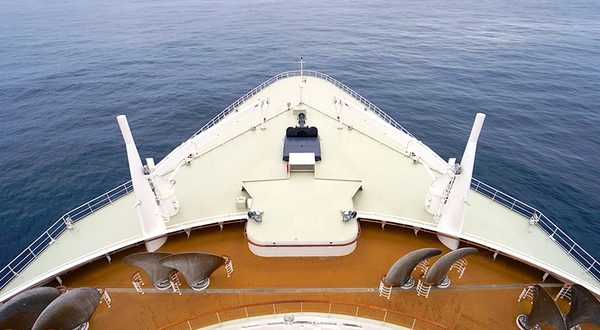[ad_1]
Most non-native Americans can trace their heritage to another part of the world, and the circumstances or story of that migration to what is now the United States is often a treasured part of the family lore. In my family, the earliest traceable line puts the earliest arrival in Virginia in the 1640s. Another hundred million Americans can trace their family’s arrival through Ellis Island, where one in five of those arrivals disembarked from a ship operated by Cunard, which has operated between Europe and North America since 1840.
Earlier in 2018, Cunard announced a special ancestry cruise onboard a seven day transatlantic crossing in November. Passengers will be able to trace their ancestors under the watchful eye of expert genealogists while traveling on the North Atlantic, the very site of several large emigration waves over the last several centuries. It is perhaps fitting that Cunard has such a long history in transporting migrants, for founder Samuel Cunard was himself the son of a Loyalist who fled Pennsylvania for Nova Scotia following the Revolutionary War.
In the 21st Century “Heritage Tourism” is a growing trend, as more and more travelers seek to follow (often quite literally) the same paths trodden by their forebears.
With over a third of Americans able to trace their families’ landings in the United States to Ellis Island, it remains a popular tourist destination. Here, visitors can examine the great hall where immigrants were given cursory examination for physical and mental health, interviewed, and asked to show the $25 the government required they have to demonstrate they weren’t likely to become a burden on public funds.
The Park Service also provides useful tips on researching ancestral arrivals before arriving at the park.
Around 2% of arrivals were found unfit to immigrate and were returned to their port of origin at the shipping line’s expense. To help combat this, many lines built inspection stations at European ports to ensure only those likely to be admitted to the United States could embark on the voyage.
In Hamburg, Ballinstadt, the Emigration Museum pays homage to travelers embarking to the New World from one of the primary jumping off points for emigrants from Central and Eastern Europe. Visitors can see replicas of the “Immigrant Villages” built by the shipping companies to ensure their passengers could receive hot meals, hygiene facilities, and health inspections before boarding, and can also review immigrant ships’ passenger manifests.
Another major embarkation point in Europe was Liverpool, where the Maritime Museum dedicates a significant amount of exhibition space to immigrant shipping, not only from the United Kingdom to North America, but throughout the old British Empire.
There are also exhibits dedicated to the lost Cunard Liner Lusitania, and the White Star Line’s Titanic, both built for the transatlantic immigrant trade, and both of which were Liverpool-registered. (White Star Line merged with Cunard in 1934, it’s legacy lives onboard Cunard liners today in the form of the company’s signature “White Star Service”.)
Ireland is also another significant source of migrants to the United States, and those visiting Dublin can stop into EPIC The Irish Immigration Museum to learn about the influence of Irish Emigrants on world history. Visitors can also perform cursory searches for their own family roots after viewing exhibits on famous Irish emigrants and the circumstances that led to several waves of Irish emigration over the centuries.
These periods of emigration have contributed to the worldwide Irish diaspora being several times larger than the island’s current population. In Cobh, which served as an immigration embarkation port in the early 20th Century, there’s also the Cobh Heritage Centre which also focuses on the stories of the ill-fated Titanic and Lusitania.
Travelers whose ancestors immigrated via the Pacific to California can visit Angel Island State Park, which served as an immigration inspection point for transpacific vessels in the early 20th Century. Visitors can peer into restored barracks and reflect on the differences between Angel Island, where Asian immigrants were detained for weeks or months on arrival and often returned, and Ellis Island where processing normally took a few hours and the return rates were significantly lower.
Regardless of which ocean or continent one’s ancestors have crossed, Heritage Tourism is bound to excite travelers as topics of human migration continue to fascinate us in the modern age. Humans have been migratory creatures since the beginning of recorded existence, whether for survival in one century or leisure in another.
[ad_2]You can read more of the news on source
 Travelsmart
Travelsmart



